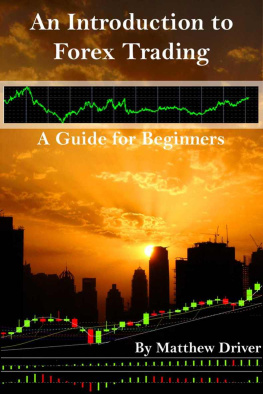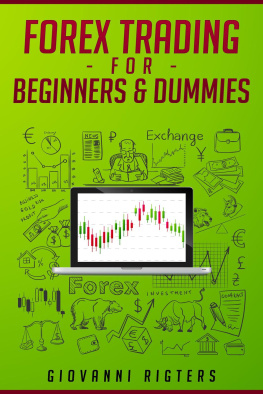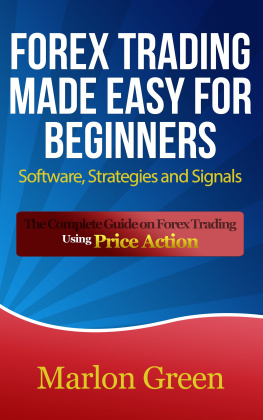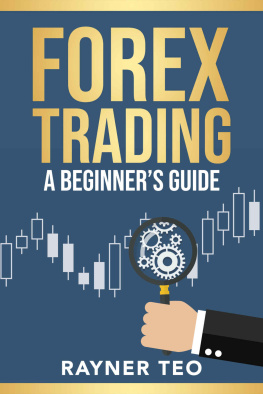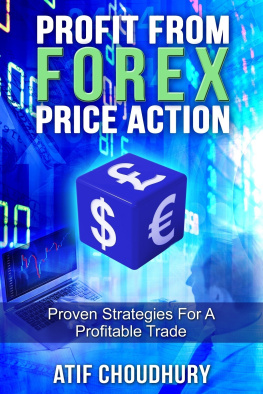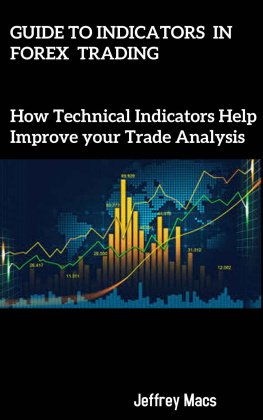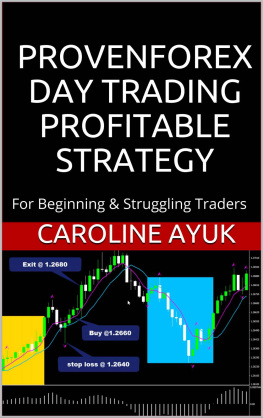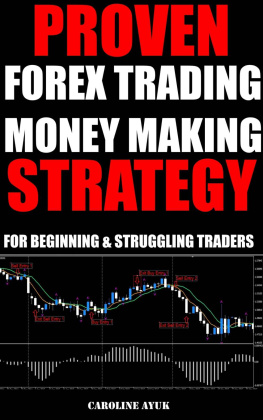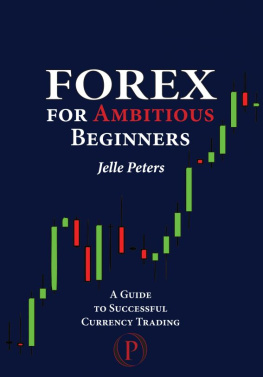Chapter 1: An Introduction to Forex Trading
The Forex market can offer fantastic opportunities to traders from all walks of life. It is possible to make good returns on your investment, and many people successfully manage to turn their trading activity into full time jobs or good second incomes.
The chance to profit from the relatively small fluctuations and changes in the values of currencies means anyone can have a go at trading and with the vast array of conventional and online tools/applications that are currently available; it is relatively easy to get started, and begin trading.
Designed for Forex beginners, the aim of this book is to provide a comprehensive understanding of how the Forex market works, how it is possible to make profitable returns, and to introduce many of the technical terms and tools that are essential for everyday trading activity.
1.1 Early Warning
It is best to get the warnings out of the way, so that you are aware of them and can then decide whether Forex trading is right for you. As with any type of financial trading there are risks involved and it is important to understand these risks, as you can then develop strategies and learn methods that can help to reduce them.
Warning: Forex Trading carries a high level of risk to your capital with the possibility of losing more than your initial investment and may not be suitable for all investors. Ensure you fully understand the risks involved and seek independent advice if necessary .
It is likely that anyone considering trading in the Foreign Exchange (Forex) Markets will have come across the above statement, at one time or another and those that havent yet, soon will. It is a warning that you will quickly come to recognise in the course of day-to-day trading and it is also an extremely important message to remember.
The truth is that there are risks associated with Forex trading, as with any type of trading, and it is important to understand and accept these risks, before progressing. Failure to understand the risks and prepare for what is involved with trading is likely to lead to financial losses. However, by taking the necessary time to learn and understand how and why the market works as it does, and acquainting yourself with essential trading knowledge, will considerably increase the chances of success.
There are many books and resources available that will try and tell you that they have discovered the perfect trading setup or offer promises of guaranteed returns. This is not one of those books! There is no magic setup or guaranteed strategy out there as much as we all wish that there was! Even institutional trading houses with advanced quantification strategies, and teams of analysts will struggle to predict market movements correctly 100% of the time.
Forex trading must be approached in the same way as one would approach any other job. A successful trader is defined as one whose losses over the long-term are overall less than their gains. Losses are a fact of life and every trader at sometime or other will experience them. The best tool available for maximising returns and minimising losses is market knowledge, and it is this that we have tried to encapsulate within this book.
1.2 What is the Forex Market?
The global Foreign Exchange Markets also known as Forex or FX represents the platform by which currency from one country can be exchanged into the currency from another. The value of currencies around the globe constantly fluctuate depending upon a whole variety of factors, and will range upwards or downwards depending upon the economic stability or instability of the countries which issue them. It is these fluctuations in value that present the opportunities to make money.
Put simply, this means that if a countries economy is performing well, then it is likely to result in an increase in the value of the currency of that country. Alternatively, if an economy is performing badly then this is likely to lead to a reduction in the value of that currency.
Key Lesson: Whilst there are obviously many different factors that can influence currency values, many of which we will consider later in this book, in simple terms the aim for traders is to identify when and how these fluctuations in currency price are likely to occur, and then trade accordingly.
1.3 Size of the Market
The Forex market is huge in size. Close to $4 trillion worth of currency is traded daily, making it by far the largest financial market operating in the world. Of this, approximately $1.5 trillion is traded by retail traders, trading the Forex spot market.
The total Forex market value represents many different activities, which will require the exchange of one currency into another. Businesses making overseas purchases or dealing with foreign suppliers and customers; international mergers and acquisitions; and, interbank dealing and transfers all require money to be transferred around the globe and converted into different currencies. This is achieved using the Forex markets.
1.4 Market Structure
The trading of stocks and shares is predominately conducted through centralised exchanges, which means that the price at which securities can be bought and sold, is controlled and manipulated by a few dominant institutions. There is, therefore, little opportunity to seek a range of prices for buying and selling within the market place.
The Forex market, however, operates using a distinctly decentralised structure. Many institutions and organisations can offer currency transactions at a variety of different prices. This means that there is the opportunity for a variety of quotations amongst dealers and the chance to buy and sell at a range of prices.
This type of decentralised organisation can initially seem confusing, however, by its nature, it actually provides considerable opportunity for retail traders. The competition that exists between institutions and market players actually ensures that the best possible pricing deals are available all of the time.

